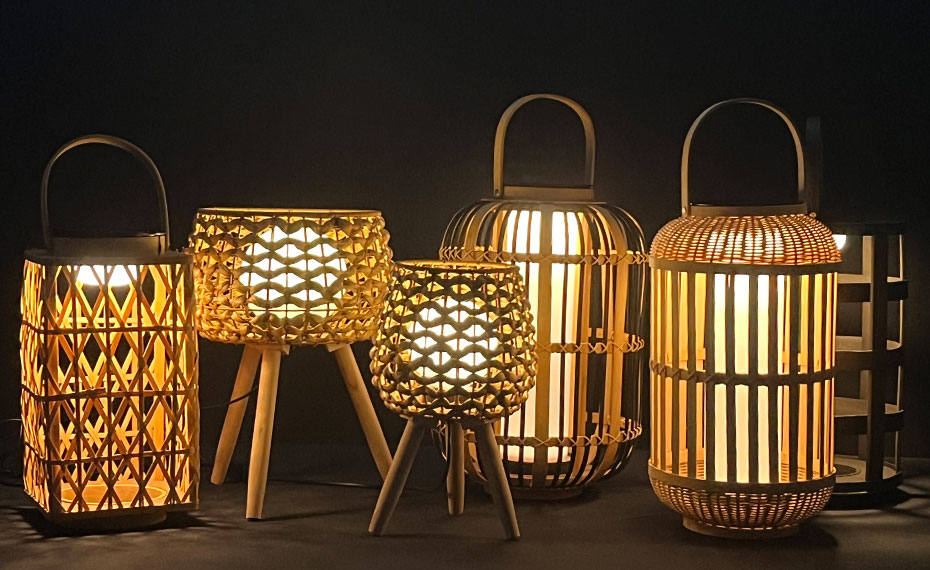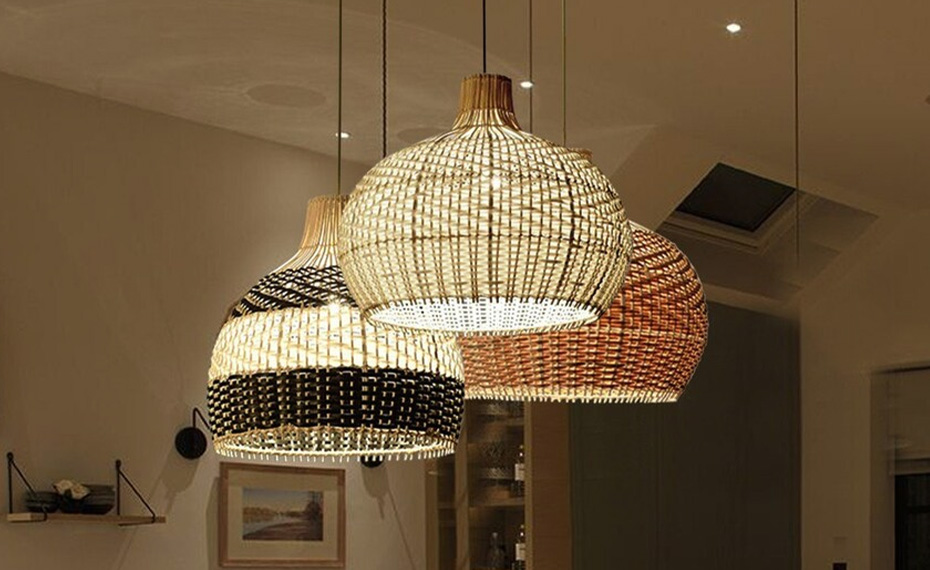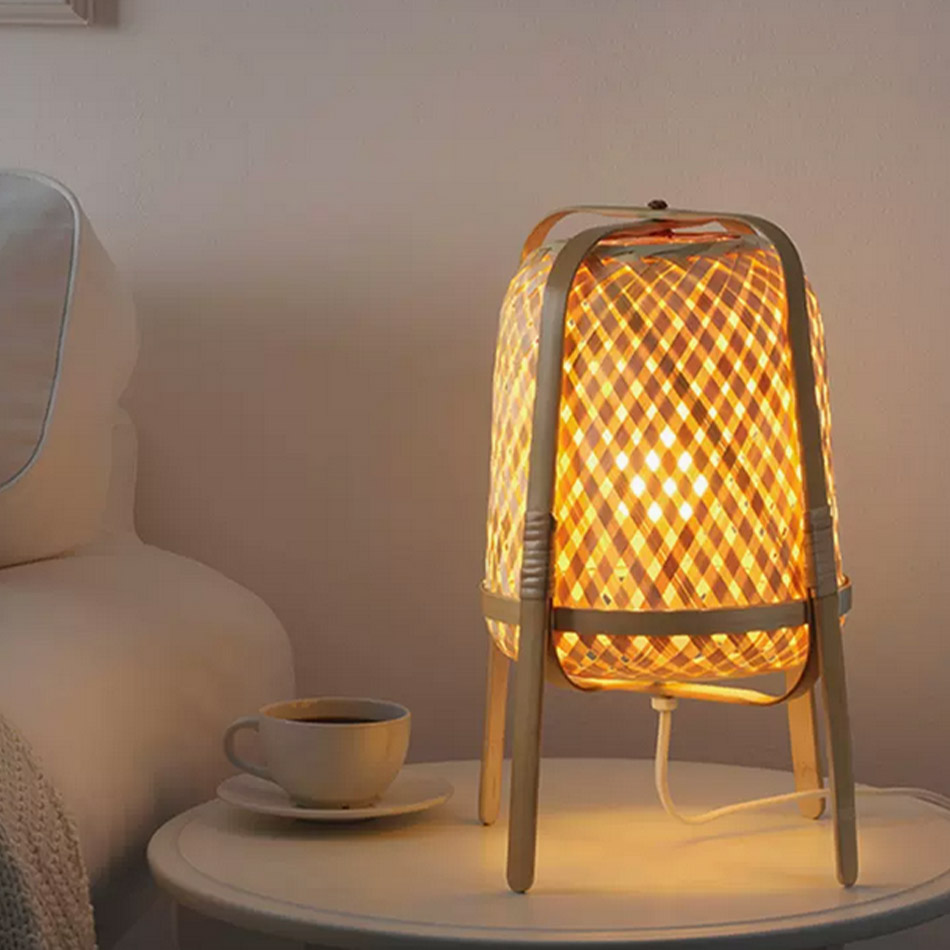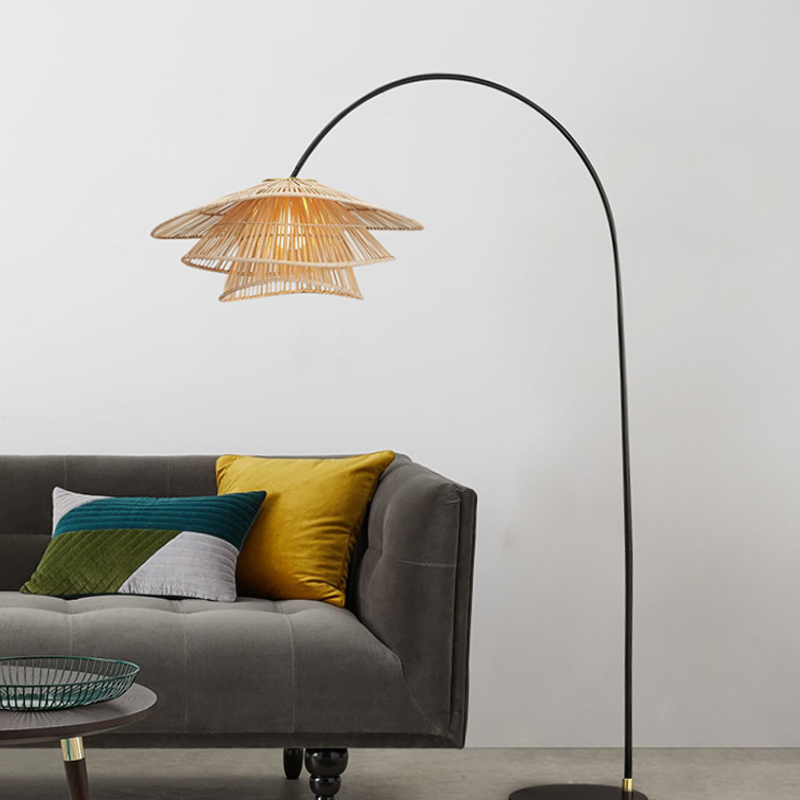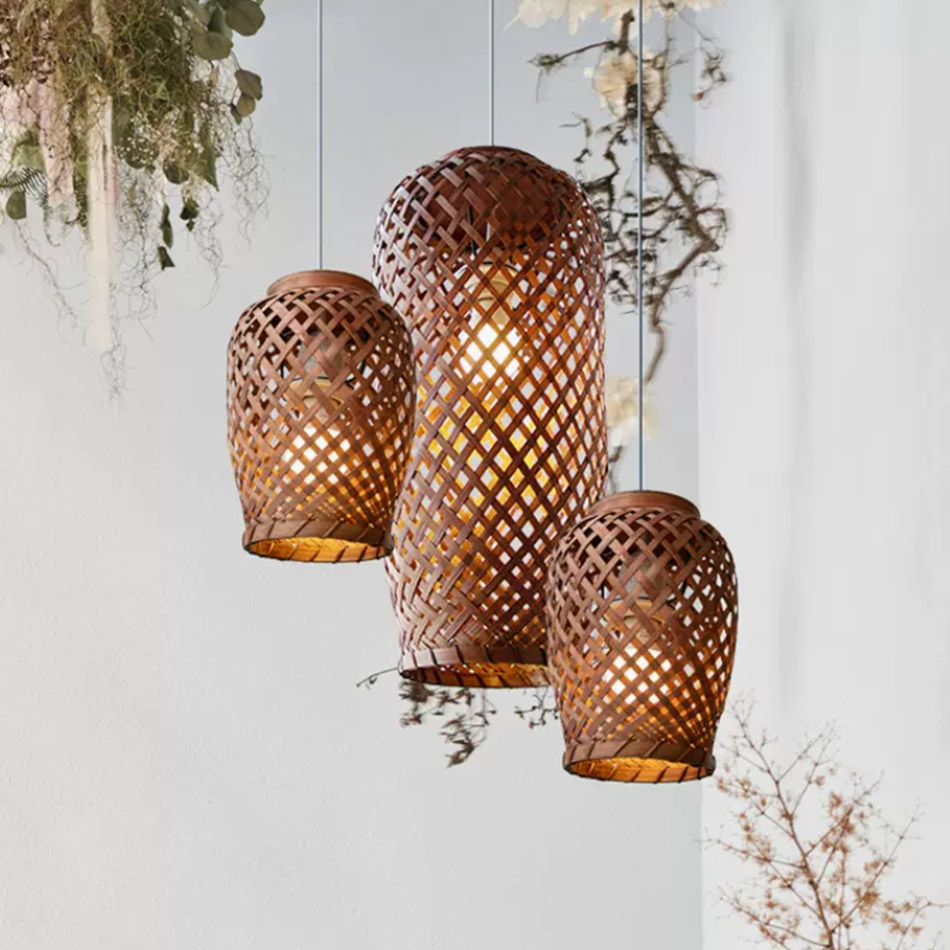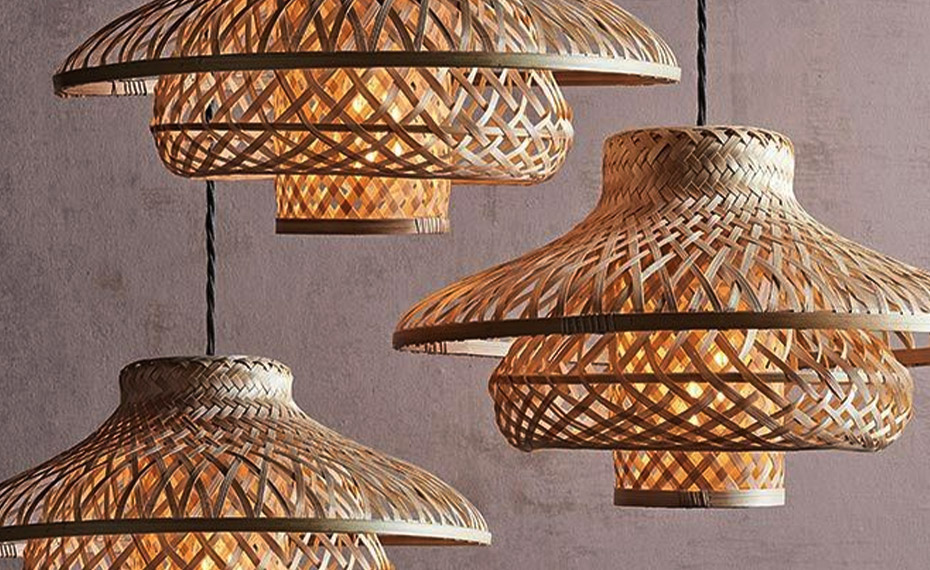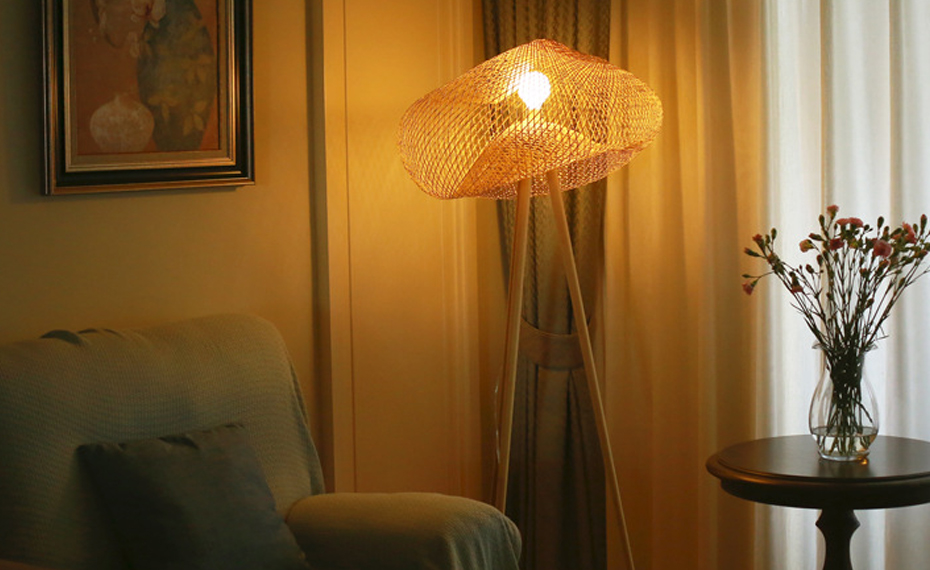In modern home decoration, natural woven lighting has gradually become a favored choice for its unique beauty and practicality. Not only can they add a touch of warmth and nature to indoor spaces, but in today's era of sustainable lifestyles, the use of natural materials also reflects support for environmental protection. Next, we’ll delve into the main materials that make up these beautiful lights and reveal their individual charm and functionality.
There are many materials for natural woven lamps, the main ones are as follows:
1. Bamboo, with its short growth cycle and strong renewable nature, is an excellent environmentally friendly material. Bamboo's natural texture and warm tones bring a relaxing and calming atmosphere to any space. And its excellent strength and sustainability have made it one of the commonly used materials for woven lighting.
2. Rattan, because of its excellent flexibility and durability, is widely used in making various woven lighting fixtures. It can be molded into a variety of complex shapes and designs, providing designers with unlimited creative space. In addition, the natural light emitted by rattan lighting can create a warm and comfortable atmosphere.
3. Hemp rope, an ancient and traditional weaving material, is popular for its rough texture and toughness. Lamps woven with hemp rope not only show the charm of handicrafts, but also add a natural and original beauty to the indoor space. The biodegradability of hemp rope also makes it an environmentally friendly choice.
4. Cotton thread, with its soft texture and rich color changes, provides more creative possibilities for woven lighting. Not only can it produce simple designs with a modern feel, but it is also suitable for making retro lighting fixtures full of country style. Cotton thread lighting is not only beautiful, but also gentle to the touch, creating a warm home atmosphere.
In addition to the above commonly used natural materials, there are also some other niche materials, such as raffia, palm leaves, wicker, etc.
If You Are in Business, You May Like
Through the above introduction, you may have questions when choosing suitable materials, so you can make the right choice based on the following points:
Durability: Consider the environmental conditions in which the lighting will be placed (such as humidity, temperature changes, etc.) and choose materials that can adapt to this environment. For example, rattan and bamboo are suitable for wet environments, while cotton string and twine may be better suited for drier environments.
Maintenance costs: Certain materials may require more frequent cleaning and maintenance. If you are looking for simplicity, you can choose materials that are easy to clean and maintain, which can greatly reduce maintenance time and costs.
Aesthetic preferences: Depending on the decorating style of a person or space, choose materials that match the style. For example, a modern minimalist style may be better suited to bamboo or cotton thread with clean lines, while a traditional or rustic space may be better suited to twine or rattan.
By taking these factors into consideration, the most appropriate natural woven lighting material can be selected for any space, which is both practical and decorative.
The production of natural woven lighting is a delicate and complex handicraft process. According to the design drawings, the artist or craftsman will carefully plan the size, shape and texture of the lighting. The craftsman will hand-weave the pre-processed materials into the designed shape. This step It requires extremely high skills and patience, and the final touch-up and finishing is done to ensure the integrity and functionality of the lighting. Each piece of lighting is the product of time and labor, reflecting the skill and creativity of the craftsman.
Proper care and maintenance are essential if you want to preserve the beauty and longevity of your natural woven lighting for as long as possible.
For example:
- Regularly use a soft-bristled brush or vacuum cleaner to gently remove dust from the lighting surface.
- For some materials, such as bamboo and rattan, you can use a slightly damp cloth to wipe gently.
- Avoid placing lighting fixtures in direct sunlight or in places that are too humid to avoid material deformation or mold.
- For specific stains or damage, please seek professional advice to avoid damaging the lighting.
Natural woven lighting has occupied a place in modern home decoration with its unique beauty and environmentally friendly advantages. By carefully choosing the right materials and adhering to traditional craft techniques, these lights not only add a natural and welcoming touch to any space, but also showcase the infinite charm of craftsmanship. I hope this article can help you better understand and choose natural woven lighting to add a touch of natural beauty to your living space.
Post time: Mar-30-2024





